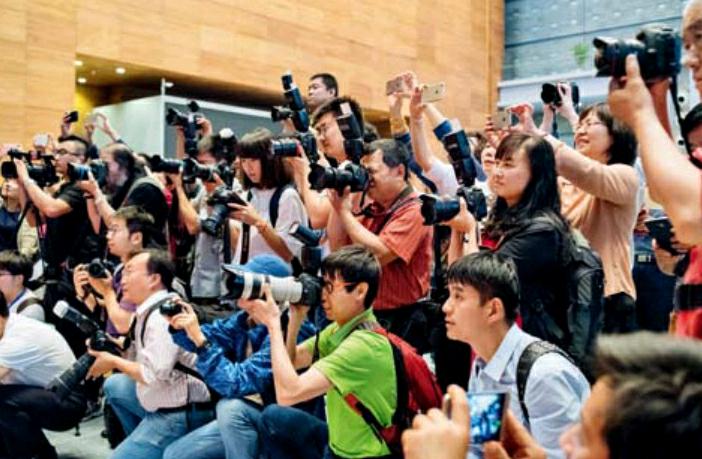ASEM & Connectivity:Importance of Media
2016-07-25byShastriRamachand
by+Shastri+Ramachandaran
Now that it is entering its 21st year, Asia-Europe Meeting (ASEM) may be said to have come of age. Therefore, it was only appropriate that on the threshold of attaining majority, ASEM should have broken new ground by holding the Media Dialogue on Connectivity. This was in Guangzhou from May 9-10, 2016.
It was not an event, but a landmark shift to give new thrust, as the theme underscored, to Promoting Public Awareness and Partnership. It ranks as a shift because it comes after two decades of: the multiple processes generated by ASEM; the emergence of connectivity as the focus area for Asia-Europe cooperation; the implied recognition that for connectivity to be complete in concept and content requires media as a partner if not as a pillar; and, flowing from that recognition, the conviction and resolve to take the first step of a Media Dialogue by creating a platform.
The platform has not come done a day too soon, although it was most timely. It took place on the eve of the 11th ASEM Summit to be held in Ulaan Baatar in July 2016. ASEM, as an informal process of dialogue and cooperation, takes place at: summit-level meetings attended by heads of state or government; ministerial-level meetings; and, senior officials-level meetings. These meetings are on foreign affairs, finance, trade, the economy, environment, and science and technology. Discussions are centred round three pillars: the political; the economic and financial; and, the socio-cultural, educational and intellectual, which has subsumed the media so far. The objective is strengthening the relationship between Asia and Europe in a spirit of mutual respect and equal partnership.
Established on March 1, 1996, ASEMs first summit in Bangkok was attended by 25 Asian and European countries, the EU Commission, ASEAN, China, Japan and South Korea. Subsequent expansion saw the number of members rise to 53 at the 10th summit in Milan in October 2014. India, Pakistan and Mongolia joined ASEM at the 6th summit in Helsinki in September 2006.
The last two years saw initiatives towards the promotion of Asia-Europe connectivity like the Think Tank Symposium, the Industry Dialogue on Connectivity, Symposium on Eurasia Transport and Logistics Network, and Seminar on ASEM at 20 -The Challenges of Connectivity.
In the last two decades and particularly in the last two years which saw so many initiatives, there appears to be a growing realization that while connectivity is high on the agenda, it is not only about physical structures and linkages. Connectivity is also about connecting to people and media; and, this is an aspect to which ASEM has not paid adequate attention.
The impact of ASEM is hardly visible in the media on an ongoing basis. ASEM is unable to generate the required media attention, except at the time of events. At ASEM events and initiatives, invariably the role and importance of media finds mention; as does the fact that ASEM needs more media visibility. Media and peopleto-people connectivity are pre-requisites for ASEM to create greater public awareness, understanding, interest and support.
This recognition of media as the missing link – and the urgency to engage and involve the media including new media and social media – may have led to the holding of the Media Dialogue in the context of connectivity; and, towards promoting public awareness and partnership.
The Media Dialogue on Connectivity from May 9-10 in Guangzhou was a platform for media representatives from ASEM countries to take stock of the story so far and share thoughts, ideas and insights on increasing ASEMs reach, impact and influence as it enters its third decade.
The first plenary session on “ASEM Connectivity Today and Tomorrow” reviewed the measures taken thus far and dwelt on the prospects ahead. Chinas Belt and Road Initiative – which is at the core of Asia-Europe connectivity, cooperation and infrastructure – was a recurring theme as a lead-in to the sessions on the media.
There were sessions on: The Relevance and Role of Media as a Major Stakeholder; Harnessing the Power of New Media; Dialogue between Media and Business; and a session on Visibility and Sustainability, which dealt with - “How ASEM can improve its visibility?” and “How media can help sustain ASEM?” The topics underscore ASEMs concerns and issues and here, too, the Belt and Road Initiative resonated as a binding theme.
Participants – mainly media persons but also officials, diplomats and businessmen – brought to the table their experiences, ideas, proposals, suggestions and reflections for developing a media focus and, at the same time, renewing ASEM in a big way.
The dialogue showed that ASEM is facing many challenges. It is far from the vibrant force it should be for achieving its ambitious objectives. First and foremost, ASEM needs to revive its own vitality. Only then would it command the appeal to capture media attention and visibility.
ASEM and connectivity should become and be perceived as a process – and not a matter of periodic events – central to the development of two continents and their people.
Until that happens, the imperative of bringing in the media as a stakeholder, partner and potential pillar would remain an uphill task.
